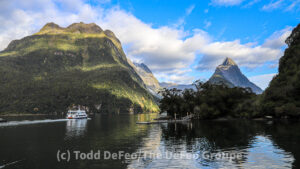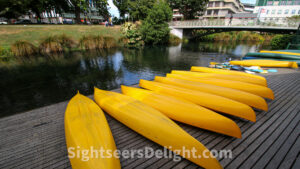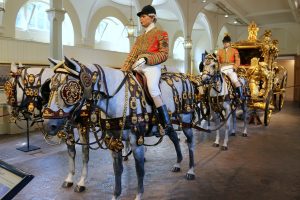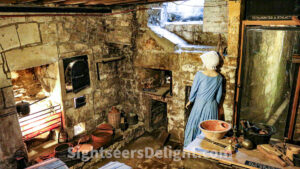Dominican friars founded Officina Profumo-Farmaceutica di Santa Maria Novella in 1221, making it one of the oldest pharmacies in the world. It is part-museum, part-store selling traditional perfumes and elixirs. The Farmaceutica has been open to the public since 1612.
The Old Town Fernandina Historic Site is the original location of the city of Fernandina Beach. The village was laid out north of the modern-day town on a low bluff overlooking the Amelia River in 1811 and expanded in 1821. The settlement was near Fort San Carlos, which was erected in 1816 and abandoned about 1821. When the railroad built to the area in the 1850s, it was unable to construct to the site of Old Town Fernandina and instead terminated at present-day Fernandina Beach. In 1853, the city relocated to its present-day location. Some buildings stand in the Old Town section, but none date to the original settlement.
The Overseas Highway is a 113-mile-long highway carrying U.S. Route 1 through the Florida Keys to Key West. It was largely built on parts of the former Overseas Railroad right-of-way, an extension of the Florida East Coast Railway to Key West Extension completed in 1912. The 1935 Labor Day hurricane heavily damaged and partially destroyed the Overseas Railroad. The Florida East Coast Railway was financially unable to rebuild the destroyed sections and sold roadbed and remaining bridges to Florida, making it a famous drive between Miami and Key West.
Piazza San Marco (or St. Mark’s Square in English) is the primary public square (Piazza) in Venice. The origins of the square date to the early ninth century, though alterations were made over the years, including in the 12th and 15th centuries. St. Mark’s Basilica sits at the eastern end of the square. Napoleon allegedly called St. Mark’s Square “the drawing room of Europe,” though whether he did is debated.
Pioneer Mill Co. formed in 1860 as the first plantation to grow sugar commercially in Lahaina. A century later, the mill processed 60,000 tons of sugar annually. In 1928, the company built a 225-foot-tall smokestack, which became a landmark for both motorists and boaters. The company transported its cut sugar cane via rail until trucks replaced trains in the 1950s. The company shuttered operations in 1999, but a question remained about how to preserve the landmark smokestack. Lahaina Restoration Foundation took over the $600,000 restoration project. Today, the chimney is part of a small park that includes a pair of locomotives — “Lahaina” and “Launiupoko” — once used on the plantation.
The Avon River runs through the heart of Christchurch, and punting along the river in a handcrafted flat-bottomed boat is a peaceful way to take in the city. Boats depart from the historic Antigua Boat Sheds, then pass through Christchurch Botanic Gardens.
The Royal Mews is the home of the stables, carriage house and garage of the British Royal Family. The Royal Mews is in the grounds of Buckingham Palace, to the south of Buckingham Palace Gardens, near Grosvenor Place. George III moved some of his day-to-day horses and carriages to the grounds of Buckingham House in the 1760s.
Sally Lunn’s is a historical house located in Bath and is known to be the oldest house in the area dating back to 1482. Here, a young Huguenot baker named Solange Luyon, Anglicized as Sally Lunn, invented the first Bath bun in 1680. This regional delicacy, similar to a brioche bun, can be relished with sweet or savory toppings and is popular worldwide. Sally Lunn’s offers a menu based on this famous bun during the day and serves fine English cuisine in the evening. Additionally, visitors can explore the original kitchen used by Sally in the downstairs kitchen museum.






